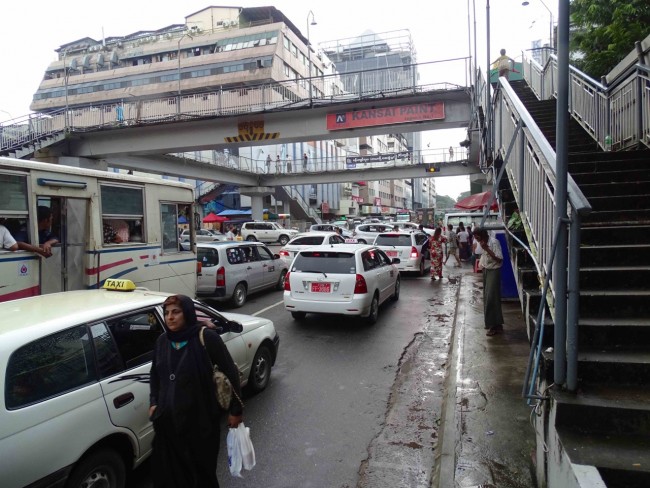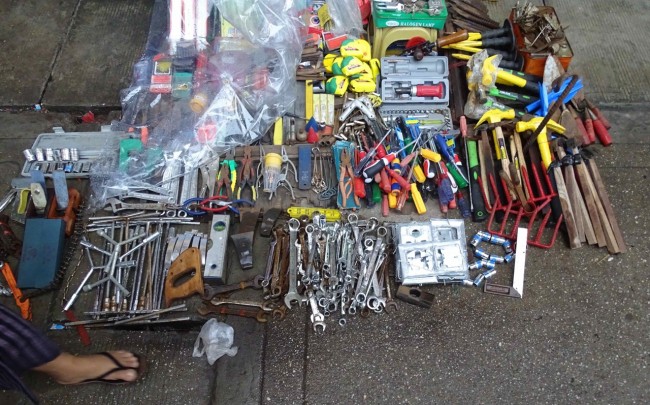Rangoon: Rich and Proud
In the early part of the 20th century Burma was a British colony and Rangoon was its capital. It was a modern, exciting, cosmopolitan city on par with Kolkata, Singapore, and Shanghai. The poet Pablo Neruda described Rangoon as “a world at its zenith – a city of blood, dreams, and gold.” Before the Second World War, Burma was the wealthiest country in the region. Rangoon was arguably the richest city in Burma.
 The country had rich natural resources and the European trading houses made fortunes in oil, tungsten, rubber, silver, lead, jade, and a host of other resources. Rich companies built large and imposing buildings in Rangoon such as the Standard Chartered Bank, Grindlays Headquarters, the head offices for the Irrawaddy Flotilla Corporation and the Burmah Oil Company. Modern department stores opened. Cinema houses with names like the Palladium, Excelsior, Globe, and Carlton were great attractions.
The country had rich natural resources and the European trading houses made fortunes in oil, tungsten, rubber, silver, lead, jade, and a host of other resources. Rich companies built large and imposing buildings in Rangoon such as the Standard Chartered Bank, Grindlays Headquarters, the head offices for the Irrawaddy Flotilla Corporation and the Burmah Oil Company. Modern department stores opened. Cinema houses with names like the Palladium, Excelsior, Globe, and Carlton were great attractions.
Rangoon – under the British – welcomed people from around the world who could make a contribution to the welfare of the colony. There were no constraints based on race, colour, or religion. Immigrants were permitted to keep their religions and their cultures. Land was allocated to Hindus, Armenians, Muslims, Jews, and Baptists to build their places of worship. At that time, Burma was administered as an extension of India and, hence, was open to unlimited Indian immigration with more than a million Indians in Burma by 1931.
Although these people maintained their customs and religions, they bonded with one another in one area: commerce. All ethnic groups – including Jews and Arabs – worked together easily and without conflict. Conflict would be bad for business.
Burma for the Burmans
Once Burma won independence from the British, the generals who ran the country wanted to cast off all aspects of the British colonial rule. The enemies of the state, then, were the 3 Ms: “missionaries, military, and merchants.” For decades the Burmese had effectively been disenfranchised in their own country by the British as well as the educated and hard working foreigners who came to the country in the wake of British colonial rule. The generals took strong measures to disenfranchise these “foreigners” – many of who had lived in Burma for generations – and remove them from positions of power. This included the police force, the banks, and the telephone service to name just a few. Instead, the generals made up their own rules about economics. As one might imagine, these rules didn’t work. This can be seen today in the city streets of downtown Yangon (the new name for Rangoon).
 More specifically, what one sees in the streets of Yangon are the remnants of a highly diverse cultural mix and one of the poorest cities in Southeast Asia. The policy of forcing “Burma for the Burmans” had the unintended consequence of reducing the richest city in the region to being the poorest. The pictures here demonstrate what I mean.
More specifically, what one sees in the streets of Yangon are the remnants of a highly diverse cultural mix and one of the poorest cities in Southeast Asia. The policy of forcing “Burma for the Burmans” had the unintended consequence of reducing the richest city in the region to being the poorest. The pictures here demonstrate what I mean.
A Look at the Streets of Downtown Yangon
The woman shown here looks like the product of a mixed marriage – a normal situation for decades. The man’s clothes clearly indicate he is Muslim. From what I could see, all the ethnic groups worked well together because it is good for commerce. Unfortunately, the generals have taken steps that have destabilized these harmonious relationships.
The picture of the hardware for sale on the sidewalk shows the extent merchants will go to in order to display their wares. This merchant did not even have a kiosk; he simply claimed a bit of sidewalk and the pedestrians respected his claim.
The farmers’ market on the main streets and the side streets, both shown here, illustrate how industrious the people of Yangon could be and, at the same time, how few opportunities there are for these people to operate from stalls as they do in the other parts of Southeast Asia I have visited: Vietnam, Laos, Cambodia, and Thailand. I have only seen this helter-skelter situation in one other country in the region: The Philippines. The Philippines, like Myanmar, is well recognized for the poor quality of its government.
I enjoyed the sight of the vendor hawking his desserts: she had them poured into bowls and ready to be eaten on the spot.
I felt saddened by the chaos of the street markets, but at the same time, I also felt encouraged by the spirit of the people. Their stamina and demonstration of their strong spirits gave me hope that, given a better economic climate afforded by a responsible government, the merchants of Yangon would fare well once again. All they need is the chance to prosper. They know how to carry their business from there.
Photo Credits
All photos by Jan Wall – All Rights Reserved







Please Share Your Thoughts - Leave A Comment!